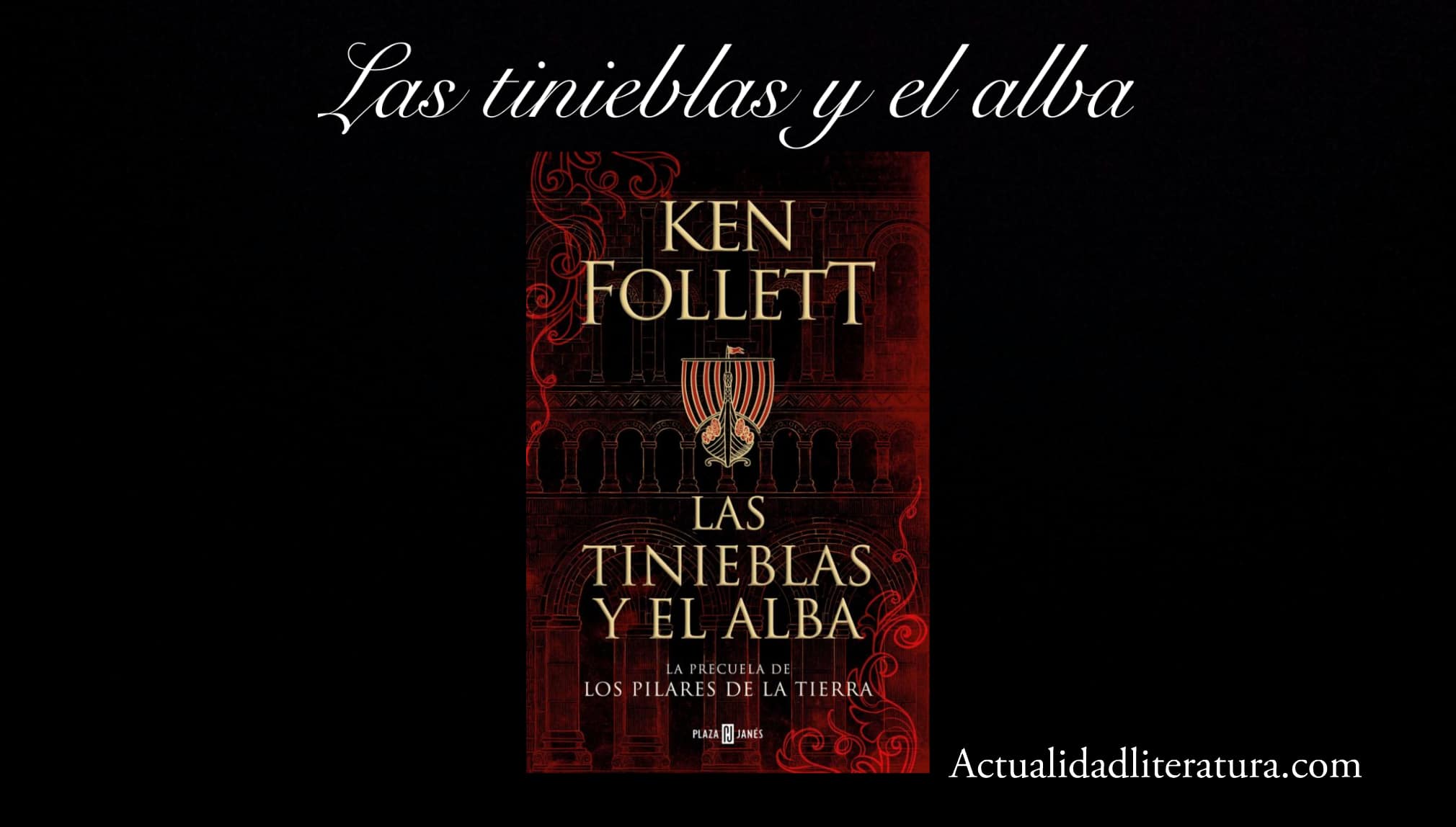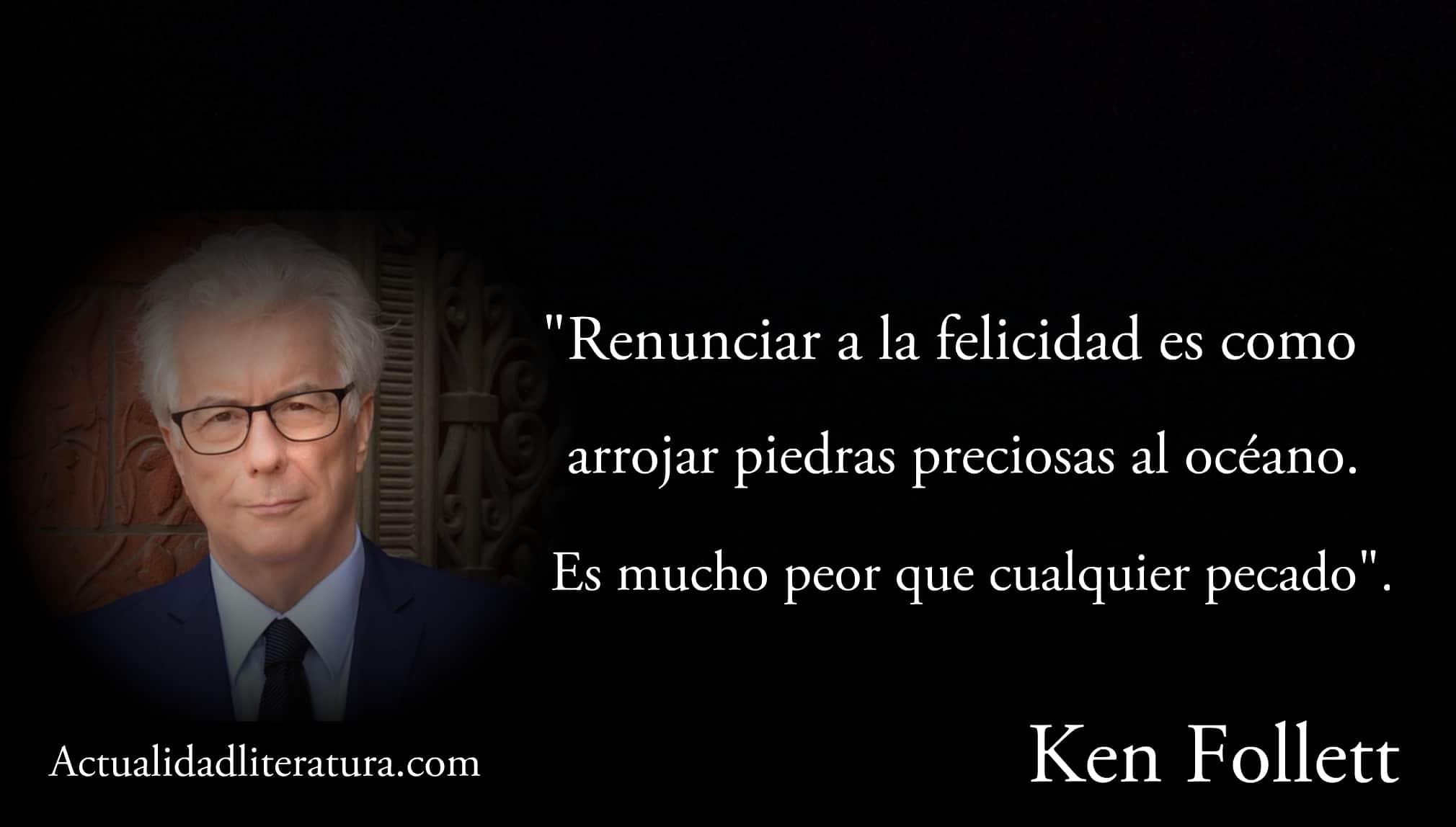
The darkness and the dawn
The darkness and the dawn (2020) is a prequel to the acclaimed trilogy of historical novels The pillars of the earth, created by Ken Follet. It is a saga started in 1989 by the Welsh author with the launch of The Pillars of Earth (English title). Later, the publication of The endless world (2007) and A column of fire (2017)
The first two books of the series more The darkness and the dawn take place in Kingsbridge, a fictional town in England. The first installment is set in the 997th century, the second in the VIV century and the prequel in XNUMX. On the other hand, A column of fire focuses on the religious strife that shocked Europe during the XNUMXth century.
Plot and characters of The darkness and the dawn
The action de The Evening and The Morning runs in three days of the year 997, In full Dark Ages in Britain. At that time, that territory was constantly besieged by the sea invasions of the Vikings and the land attacks of the Welsh.
The plot features three main characters: a monk, a Norman girl newcomer to England with her husband and a boat builder. They meet in Kingsbridge, where they must face a greedy bishop whose only goal is to increase his power.
The characters of The darkness and the dawn, according to Ken Follet
Ragna
The author has said in various interviews that Ragna is his favorite character. Her She is a beautiful and intelligent Norman princess with a strong temperament, married to a man without noble blood. Not having the consent of her parents, the young woman decides to go with her husband to England. But, when they get there, he discovers that things are not as he had imagined.
Edgar
He is a talented English boat manufacturer, in love with Ragna. But since she is a married woman, it is certainly an irrational attraction. Despite his unrequited love, Edgar does not seek comfort from another woman and persists in waiting for his chance with the princess.
Aldred
He is a monk with a rather ambitious mission: to turn his abbey into a center of learning admired throughout Europe. For this reason, his life project revolves around building the headquarters of his dream school with its respective library and printing press.
Bishop Wystan
Follet describes him as "one of the most depraved villains I have ever created ... You are going to hate him so much that you are going to wish him the worst possible ending ”. Accordingly, he is a disloyal, treacherous man, greedy, selfish and devoid of any sign of mercy. Thus, Wystan's sole purpose is to increase his power and that of his family no matter who he takes in front of him, at any cost.
Opinions about the work
As in almost all of Follet's historical novels, critics and audience applaud - almost unanimously - the hooking power of the book. Additionally, the impressive documentation obtained by the author is evident due to the detailed descriptions of the political fabric and customs of the time.
The few opposing voices complain about a misogynistic narrative, loaded (supposedly) with segments of torture that are not essential for the outcome. In contrast, other reviews explain that precisely those crude and bloody passages are the most representative of the moment in which the text is set. It was a very tough time.
About the author, Ken Follet
Kenneth Martin Follett was born in Cardiff, Wales, United Kingdom; on June 5, 1949. During his childhood he developed a great love for reading because his parents, practicing Christians, prohibited him from watching television and going to the movies. He and his family moved to London When I was ten. There he enrolled at the University College of London in 1967 to study philosophy.

Ken Follett quote.
Upon graduation in 1970, did a journalism course and started working for the South Wales Echo from his hometown. In early 1974 he went to Evening Standard in London, however, he eventually became dissatisfied with the reporter's craft. For this reason, Follet entered the publishing world in EverestBooks and began writing his first stories in the late 70s.
Marriages and political activity
In 1968, Follet married Mary, a college classmate in London with whom he lived for less than a decade. Later, in 1984 he married Barbara Hubbard (maiden name), a member of the Labor Party, an organization with which Follet has been associated since 1970.
Beginnings of his literary career
During the 1970s, Follet published nine books under the pseudonyms Simon Myles, Martin Martinsen, Bernard L Ross and Zachary Stone. In 1978, Island of storms —Signed with his real name— was the launching point of his international career. Eleven years later, the book was released that made it a global bestseller: The pillars of the earth.
A star of the publishing market
Apart from historical novels, Follet has been noted for its suspenseful narratives. Within this last subgenus, The key is in Rebecca (1982) The wings of the eagle (1983), Valley of the Lions (1986) and The third twin (1997), are some of his most notorious books. In fact, they all have film and television adaptations, as well as High risk (2001) and In the White (2004)
The style of Ken Follet's historical novels
Historical novels of the British writer have characteristics of meta-fiction or historical fiction, as they incorporate protagonists taken from their imagination. Nonetheless, most literary critics have praised Follet's fidelity to the true events (narrated by the fictional characters). Likewise, they usually have highly detailed descriptions and be quite extensive.
Despite the enormous number of pages (also present in The darkness and the dawn) Follet's narratives generate a lot of engagement in readers. These style traits can be seen in the two most renowned trilogies of the Cardifian writer: The pillars of the earth y The century.
Trilogy of The century
This trilogy with best-selling figures revolves around the most relevant events of the XNUMXth century. The series begins with the events related to the Great War and the Prohibition decree in the United States (The fall of the giants, 2010). Then The winter of the world (2012), focuses on World War II while The threshold of eternity (2014) covers almost the entire Cold War.
